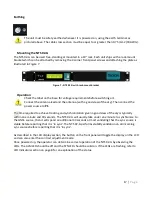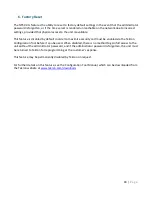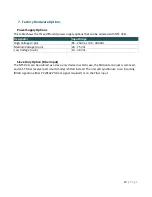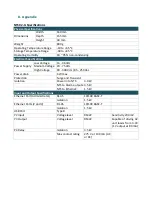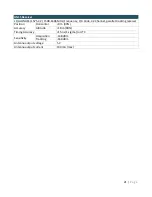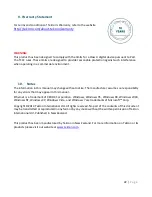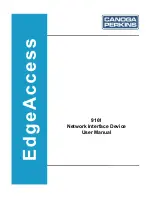
9 |
P a g e
will also appear on the LCD. Refer to the Specification Alarm table below for the details on each alarm
by name.
Table 2 - Alarm Specification
LCD Alarm Alarm Name Specification
Sats
Satellites
Low
The number of satellites currently being used for time and position
calculations is below the threshold.
Sync
No Sync
The NTS 02-G is not synchronized to any source, or holdover period has
expired, or the timing output inaccuracy has been exceeded.
Hold
Holdover
The NTS 02-G has lost synchronization to any source and is now in
holdover.
AntL
No Antenna The antenna circuit current drain is low (typically under 3mA). This could
be caused by:
•
poor connections
•
the connected antenna having a lower current drain specification
•
a component in the antenna system providing power to the
antenna and therefore the time server is not seeing a connected
load
•
there being no antenna connected
AntH
Antenna
Short
The antenna circuit current drain is high (typically over 100 mA). This is
caused by a short in the antenna circuit, or by moisture ingress in the
circuit, or if the antenna connected has a higher current drain
specification.
N/A*
Antenna
Fault
This alarm is generated if there is high current or low current detected on
the antenna input.
Factory
Reset Cycle
Power
Factory
Reset Armed
This alarm is generated if the Forgotten Password Reset (Factory Reset
Process) is enabled and has been initiated by the user.
IRIG
No IRIG-B
Input
No valid IRIG-B source is detected on the NTS 02-G input. This message
only appears if the NTS 02-G is configured with IRIG-B monitoring
enabled.
N/A*
Overcurrent The NTS 02-G supports output current monitoring and has detected
excessive current on one or more outputs. Check the I/O tab to identify
which output is experiencing the fault.
IPeX
ETHx
Address
Fault
This alarm comes up when the DHCP server is unavailable or when the IP
address is assigned to some other node in the network and cannot be
assigned to the port. Under such situations the port defaults to a link local
address.
eX represents the port number which has the alarm. For example, IPe1
indicates address fault alarm on ETH1.
SYNC
FORCED ON
Sync Forced This alarm is generated when the “Never leave Sync (Test Mode)” option
has been selected.
*Note: N/A indicates that this alarm does not appear on the LCD.

















